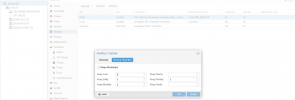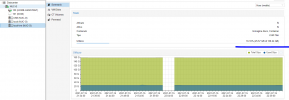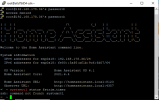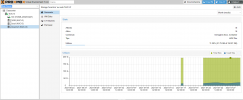Hi,
I'm freaking about it, local-lvm increase every day and i don't know why.
I have only a machine in use, Home Assistant, and i make backup ( snapshot ), in a USB mounted, so local-lvm should be not touched, but grow up.
And i also have 56GB that proxmox decided without any input by me, to use for root, that are useless, why i can't decided when i installed it ? How can decrease easily root disc? and also local-lvm to avoid this issue that grow up?






I'm freaking about it, local-lvm increase every day and i don't know why.
I have only a machine in use, Home Assistant, and i make backup ( snapshot ), in a USB mounted, so local-lvm should be not touched, but grow up.
And i also have 56GB that proxmox decided without any input by me, to use for root, that are useless, why i can't decided when i installed it ? How can decrease easily root disc? and also local-lvm to avoid this issue that grow up?










